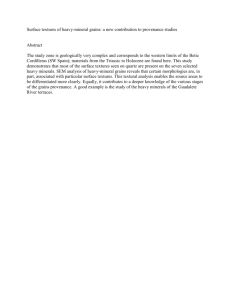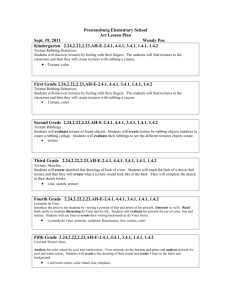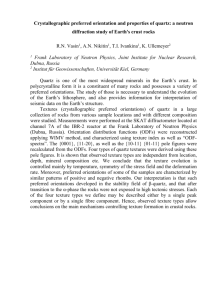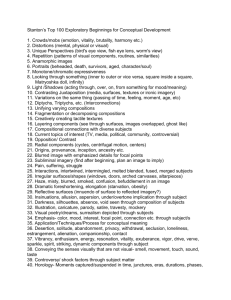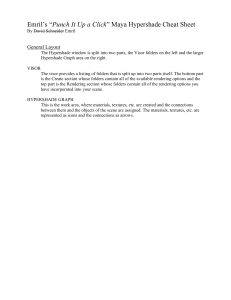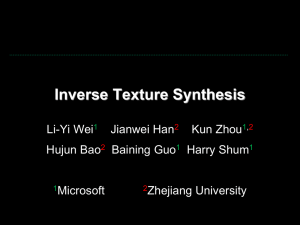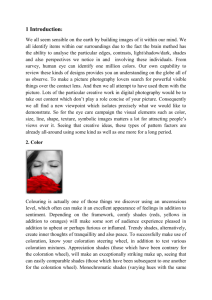Texture
advertisement
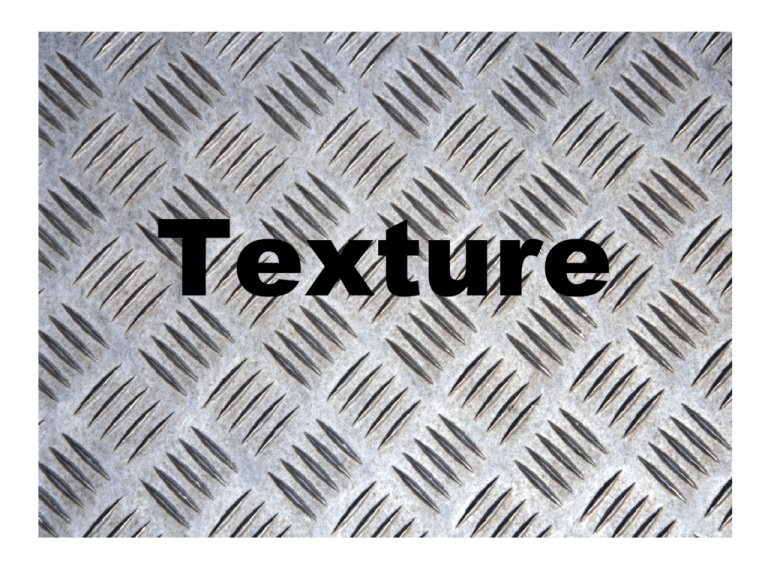
Texture We don’t need to physically touch something to know how it might feel. We can rely on our memories. Artists can manipulate these memories to create interest Méret Oppenheim. Breakfast in Fur 1936 Two ways to perceive texture Tactile Texture Two ways to perceive texture Tactile Texture Visual Texture The thick layers of paint add a tactile texture to this painting Different types of visual textures Simulated Textures Different types of visual textures Simulated Textures Invented Textures Simulated texture Gerhard Richter Betty 1998 Invented Textures Victor Vaserely Sphere in Relief 1975 Bridget Riley Cataract 3 1967 Vernor Panton 1973 Yayoi Kusama Obliteration 2012 Invented Textures Textures that are created by the repetition of lines and shapes. Victor Vaserely Sphere in Relief 1975 Bridget Riley Cataract 3 1967 Vernor Panton 1973 Yayoi Kusama Obliteration 2012 Every surface is an arrangement of light and dark values Smooth Surfaces Rough Surfaces Reflect light evenly. Uninterrupted by shadows Reflect light unevenly. Show irregular patterns of light and shadow Agnes Martin Wood #4 1964 Gerhard Richter Pavilion Matte –vs- Shiny Matte surfaces reflect a soft dull light absorb the rest. Matte –vs- Shiny Matte surfaces reflect a soft dull light absorb the rest. Shiny surfaces reflect light, can have highlights. Collage Pablo Picasso Glass and Bottle of Suze 1912 Collage An artwork created by pasting cut or torn materials such as paper photographs and fabric to a flat surface. Pablo Picasso Glass and Bottle of Suze 1912 Frottage Frottage Designs and textural effects are created by placing paper over objects that have raised surfaces and rubbing the paper with graphite, wax or crayon. Grattage Grattage Wet paint is scratched with a variety of tools, such as forks, razors, combs, or the other end of a paintbrush. Decalcomania Decalcomania Decalcomania Potters use different glazes, and will use various tools to add texture to pieces. Architexture Architects use various materials such as wood, glass, stone, brick, cement, plaster, and metal to achieve different textures. Weavers use different fibers and weaving techniques to add texture to their projects.



